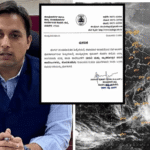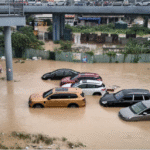Supreme Court for Drought Relief from Centre:- In a country as diverse and geographically varied as India, the specter of natural disasters looms large, posing significant challenges to governance and development. Karnataka, a state with a rich tapestry of landscapes ranging from lush forests to arid plains, is no stranger to the impact of natural calamities. In recent times, the state has grappled with the debilitating effects of drought, threatening the livelihoods of millions of its citizens. Against this backdrop, the Karnataka government’s decision to approach the Supreme Court seeking drought relief from the central government underscores the intricate interplay between federalism, disaster management, and governance.
 for more information click on this link
for more information click on this link
Drought, characterized by prolonged periods of water scarcity, presents a multifaceted challenge with far-reaching socio-economic implications. In Karnataka, the recurrence of drought exacerbates existing vulnerabilities, particularly in rural agrarian communities reliant on rain-fed agriculture. The failure of monsoons and depletion of water sources not only jeopardize agricultural productivity but also engender food insecurity, rural distress, and migration.
The Karnataka government’s recourse to legal avenues, specifically the Supreme Court, reflects the complexities inherent in addressing the aftermath of natural disasters within India’s federal structure. Historically, states have been the frontline responders to disasters, tasked with mitigation, relief, and rehabilitation efforts. However, the magnitude and scope of certain calamities often transcend state capacities, necessitating coordinated action at the national level.
- The constitutional delineation of powers between the central and state governments lays the foundation for India’s federal structure. While states possess primary responsibility for disaster management, the central government plays a crucial role in providing assistance and coordination, especially in the case of severe or widespread calamities. The Karnataka government’s invocation of the Supreme Court underscores tensions between state autonomy and central intervention in disaster response.
- Drought relief efforts entail substantial financial resources for measures such as water supply augmentation, employment generation, livestock support, and social assistance programs. The Karnataka government’s plea for central assistance raises questions about the equitable allocation of resources and the fiscal capacity of both the state and central governments to address emergent needs amidst competing demands.
- Effective disaster management hinges on robust policy frameworks, institutional mechanisms, and proactive preparedness measures. Karnataka’s appeal to the Supreme Court brings to the fore issues related to policy coherence, contingency planning, early warning systems, and capacity-building initiatives aimed at enhancing resilience and adaptive capacity at the grassroots level.
- Droughts are not isolated events but are often symptomatic of broader environmental degradation, climate variability, and water management challenges. The Karnataka government’s plea for drought relief prompts reflection on the imperative of integrating environmental sustainability into disaster risk reduction strategies, including watershed management, afforestation, and sustainable agricultural practices.
The Karnataka government’s decision to approach the Supreme Court seeking drought relief from the central government invokes the constitutional mandate of the right to life under Article 21, encompassing the right to livelihood and access to basic necessities. The Supreme Court, as the guardian of fundamental rights, is called upon to adjudicate on matters of public interest, including the provision of relief in the wake of natural disasters.
the Karnataka government’s plea necessitates a nuanced examination of legal precedents, statutory provisions, and constitutional principles governing disaster management and federal relations. The Supreme Court’s intervention can provide clarity on the respective roles and responsibilities of the central and state governments, the criteria for declaring droughts, the modalities of relief distribution, and mechanisms for accountability and transparency.
Furthermore, the Supreme Court’s jurisprudence on environmental governance, sustainable development, and social justice informs its deliberations on matters pertaining to drought relief and disaster response. Judicial activism in safeguarding the rights of vulnerable communities, ensuring equitable access to resources, and promoting participatory decision-making processes can influence policy outcomes and governance practices.
Judicial review of Supreme Court:-
- Addressing the complex challenges posed by droughts requires a multi-stakeholder approach involving governments at all levels, civil society organizations, academic institutions, and the private sector. Collaborative platforms for dialogue, knowledge sharing, and joint action can facilitate synergy and coherence in drought mitigation and adaptation efforts.
- Evidence-based decision-making underpins effective disaster management, encompassing early warning systems, risk assessments, and impact evaluations. Investing in robust data infrastructure, remote sensing technologies, and participatory monitoring mechanisms enhances the accuracy and timeliness of decision support systems, enabling proactive interventions and resource allocation.
- Droughts disproportionately affect marginalized and vulnerable groups, including women, children, the elderly, and persons with disabilities. Mainstreaming gender considerations and ensuring the meaningful participation of diverse stakeholders in disaster planning and response processes are essential for addressing differential vulnerabilities and promoting social inclusion and resilience.
- Embracing nature-based solutions such as afforestation, soil conservation, and sustainable land management can bolster ecosystem resilience and buffer communities against the impacts of droughts. Integrating traditional knowledge systems with modern scientific practices fosters adaptive capacity and fosters a harmonious relationship between humans and the environment.





